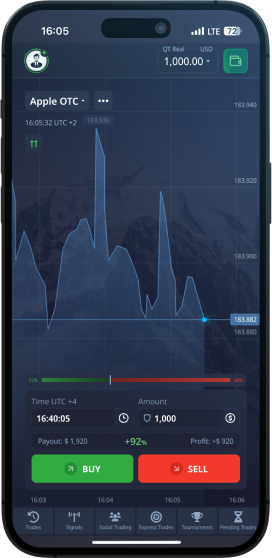
Choosing the Best Pocket Option Indicators for Effective Trading
In the fast-paced world of online trading, having the right tools can make a significant difference in your success. One of the most critical aspects of trading is utilizing indicators that can provide insights into market trends and price movements. In this article, we will explore the best pocket option indicators best pocket option indicators that can help you streamline your trading approach and maximize your returns.
Understanding Trading Indicators
Trading indicators are mathematical calculations based on price, volume, or open interest that traders utilize to evaluate market performance and forecast future price movements. They can be classified into different categories, including trend indicators, momentum indicators, volatility indicators, and volume indicators. Each type serves a unique purpose and can enhance a trader’s analytical capabilities.
Types of Indicators
1. Trend Indicators
Trend indicators help traders identify the overall direction of the market. They can be pivotal when deciding whether to enter or exit a trade. Some popular trend indicators include:
- Moving Averages: Simple Moving Averages (SMA) and Exponential Moving Averages (EMA) smooth out price data to help traders identify trends more easily.
- Average Directional Index (ADX): A tool that quantifies the strength of a trend, assisting traders in determining whether to trade with or against the trend.
2. Momentum Indicators
Momentum indicators measure the speed of price changes, allowing traders to assess the strength of a price movement. Examples include:
- Relative Strength Index (RSI): A popular momentum indicator that ranges from 0 to 100, helping identify overbought or oversold conditions.
- Stochastic Oscillator: A momentum indicator that compares a particular closing price to a range of prices over time, indicating potential reversal points.
3. Volatility Indicators
Volatility indicators provide insights into the degree of price fluctuations over a specific period. Key examples are:
- Bollinger Bands: These bands consist of a moving average and two standard deviations. When prices touch the upper band, it often indicates an overbought condition, while the lower band signals oversold conditions.
- Average True Range (ATR): ATR measures market volatility by decomposing the entire range of an asset for that period, helping traders make informed decisions about stop-loss levels.
4. Volume Indicators
Volume indicators analyze the number of shares or contracts traded during a specific period, giving insights into the strength of price movements. Common volume indicators include:

- On-Balance Volume (OBV): This uses volume flow to predict changes in stock price, with the principle that volume precedes price movement.
- Chaikin Money Flow (CMF): A volume-weighted average of accumulation and distribution over a specified period, indicating buying and selling pressure.
Best Pocket Option Indicators
When it comes to selecting the best pocket option indicators, traders often have unique needs and trading styles. However, several indicators have proven to be particularly effective across various trading strategies:
1. Ichimoku Cloud
The Ichimoku Cloud is an all-in-one indicator that provides insight into support and resistance levels, trend direction, and potential buy/sell signals. It’s particularly useful for identifying trade opportunities in trending markets.
2. Fibonacci Retracement
Fibonacci retracement levels are key horizontal lines that indicate potential support or resistance areas based on the Fibonacci sequence. Traders use these levels to identify pullback opportunities within ongoing trends.
3. Moving Average Convergence Divergence (MACD)
The MACD is a trend-following momentum indicator that shows the relationship between two moving averages of a security’s price. Its divergence and crossovers can signal potential buy or sell opportunities.
4. Volume Profile
This indicator provides a visual representation of trading activity over a specified time period at certain price levels. It highlights areas of high volume that can serve as potential support or resistance zones.
Practical Tips for Using Indicators
While indicators can enhance your trading strategy, it’s essential to use them effectively:
- Combine Multiple Indicators: Relying on a single indicator can be misleading. Combining different types helps confirm signals and filter out false ones.
- Understand Market Conditions: Some indicators perform better in trending markets, while others excel in ranging markets. Adapt your choice of indicators based on market conditions.
- Backtest Strategies: Before committing real money, test your strategies with historical data to ensure their effectiveness over time.
Conclusion
In conclusion, the best pocket option indicators serve as vital tools for traders looking to navigate the complexities of the financial markets. By understanding the various types of indicators and implementing them effectively, traders can develop informed strategies that enhance their chances of profitability. Whether you are a beginner or an experienced trader, integrating these indicators into your trading plan can provide the edge you need in a competitive market landscape.